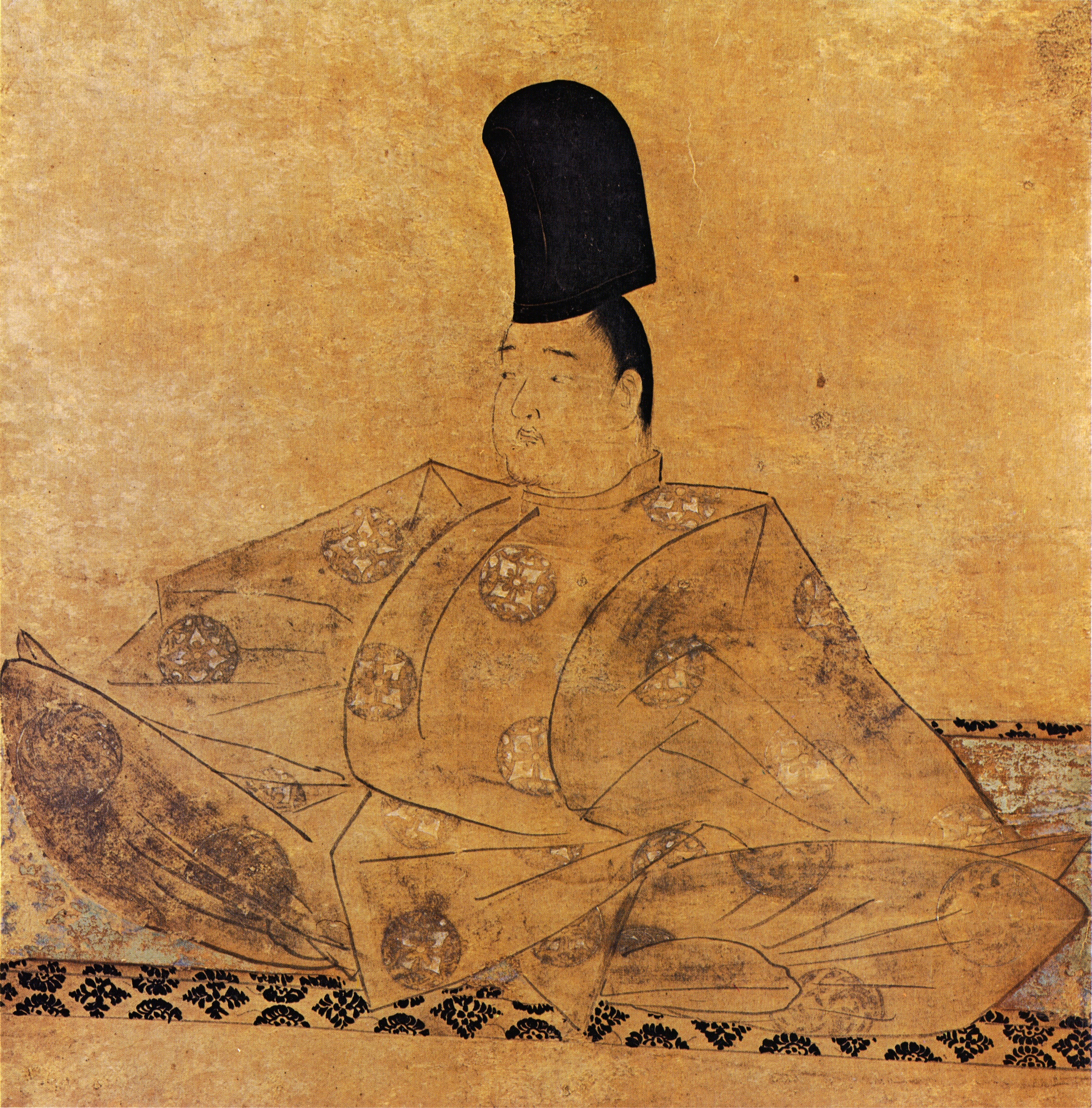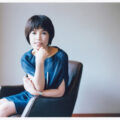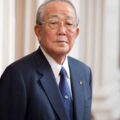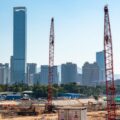From the Normalization of Diplomatic Relations to Its 50th Anniversary: A History of Architectural Exchanges between Japan and China
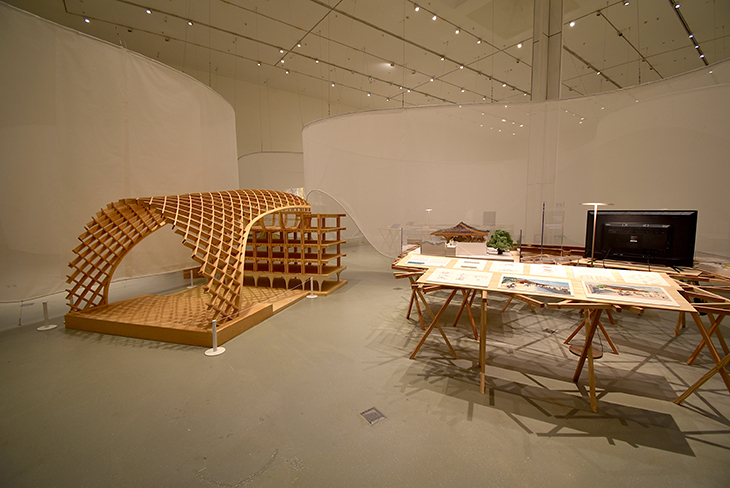
Installation view of “Beyond Borders: Architectures of Japan”
All photos: Courtesy of the author
Ichikawa Koji, Architectural historian, Assistant Professor, Tohoku University
Beyond Borders: Architects Transcending Borders

Prof. Ichikawa Koji
To commemorate the 50th anniversary of the normalization of diplomatic relations between Japan and China, Shenzhen’s cultural complex “Shenzhen Sea World Culture and Arts Center” hosted an exhibition of contemporary Japanese architecture titled “Beyond Borders: Architectures of Japan” (dates: 5 November 2022–19 February 2023). Let’s begin by talking about this exhibition.
This exhibition, co-organized by the Japan Foundation and the Design Society in Shenzhen, is, as the title suggests, focused on Japanese architects’ “works that transcend national borders.” The exhibition consists of two main parts. The first includes models and installations by Maki Fumihiko and Isozaki Arata, who have been active since the 1960s, as well as Ando Tadao, Ito Toyo, Ban Shigeru, Kuma Kengo, Ishigami Junya, and Fujimoto Sou, eight architects active all around the world. Then there is the panel exhibition of young to mid-career architects, such as Tane Tsuyoshi, onishimaki + hyakudayuki / o+h, and Aoyama Shuhei who has come to enjoy great fame in China after some TV appearances. The venue was designed by the young Chinese architect Fan. Translucent partitions are hung to gently divide up the exhibition areas by free curves. The atmosphere of the space nicely represents the characteristics of the greatest common denominators of modern Japan architecture, such as delicacy, softness, whiteness, and blurring of boundaries (the wooden furniture design is by Tofuku Daisuke, who is also active in China).
Professor Ken Tadashi Oshima at the Department of Architecture at the University of Washington is the curator. Oshima has organized a similar exhibition at the Museum of Architecture, Kanazawa, in the past. This exhibition may be considered an upgraded version. A major change is that the core exhibitors, the eight architects, each display at least one project in China. For example, Maki Fumihiko has a big model of the venue that is “Shenzhen Sea World Culture and Arts Center,” while Ando Tadao has one of a museum that combines the circular forms of Guangdong Province (“He Art Museum” [HEM]) and Ishigami Junya one of a kindergarten that blends with the forest in Shandong Province (“Forest Kindergarten”). Although Ito Toyo is active internationally, in fact, he has never done an actual work in China until now, but this exhibition presents his contribution to the Zhejiang Province library project (“Ningbo Huamao International Education Library”). Also noteworthy is the restoration and re-production of Ito’s 1980s bubble-period furniture piece “Pao: A Dwelling for Tokyo Nomad Women I.” In the new museum M+ in Hong Kong, Kuramata Shiro has moved and rebuilt the complete interior design of a sushi restaurant, also from the bubble period, so interest in the Japanese design of the high-consumption society of that time is growing.
Conversely, what can be said from the exhibition is that the architects representing Japan are all doing work in China. So much so that China has developed a very favorable impression of Japanese architects. In the first place, many Japanese architects have been awarded the Pritzker Architecture Prize, known as the “Nobel Prize of architecture” and enjoy international acclaim, but there are few places where “border-transcending Japanese architecture” can be found to the extent they are in China. (Of course, the Chinese market itself is huge.)
As mentioned above, this exhibition is co-organized with the Japan Foundation, and it is one of a number of joint exhibitions of the Japanese government that are meant to be commemorative projects for the 50th anniversary of the normalization of diplomatic relations (the lineup can be found on the website of the Ministry of Foreign Affairs). This seems to be the first time that architecture has been featured in a major way in such “anniversary projects.” The remarkable performance of Japanese architects in China is undoubtedly the reason, but a certain “heterogeneity” of architecture in artistic expression may also be one of the reasons for the attention this time around. Art and film are also genres where Sino-Japanese exchange is thriving, but because political claims often come to the foreground, they are not suitable for commemorative projects in the current Xi Jinping era with its stricter control over speech. In this respect, architecture is a genre where it is difficult to express pure politics because it is created with interference from various social and economic factors, such as people, money, time, and institutions, which is why it is sometimes referred to as “impure” art. It would be quite interesting if it were this “impurity” that is fundamental to architecture that led to this exhibition becoming a commemorative project.
Japan as seen from China: From technological pioneer to design partner
If we trace the activities of Japanese architects in China, they go back to the 1980s after the normalization of diplomatic relations as well as the reform and opening-up. The nature and scale of their work is diverse, but they can be roughly divided into two phases, before and after the end of the 1990s.
The 1980s–1990s features the work of organizational design firms and general contractors. The “Shangri-La Hotel Beijing” by Taisei Corporation and others (1986), the hotel and office complex “Beijing Jingguang Center” by Nihon Sekkei (1990), the “Shanghai Senmao International Building” by Mori Building, Fujita, Obayashi Corporation (1998), and other large and functional high-rise complexes make up the bulk. The Beijing Jingguang Center is 208 meters high and was the tallest building in Beijing until the early 2000s.
Today, China is one of the world’s meccas of skyscrapers, but in the 1980s it had just completed its Great Leap Forward [policy] and Cultural Revolution. At that time, there was almost no technical accumulation for architectural high-rises. Another major reason is that skyscrapers were shunned as capitalism icons. Therefore, what China wanted from Japan and Western construction companies was for them to play a pioneering role in modern and advanced Western building technology.
When foreign companies carry out construction projects, it is common for them to collaborate with local companies that have local construction qualifications and are familiar with local rules and customs. In China, there are particularly strong restrictions on qualifications. Therefore, even for the aforementioned projects, the exact designer credit of the Beijing Jingguang Center, for example, includes the name of a Chinese organization (Beijing Institute of Architectural Design). Chinese designers and builders absorbed Japanese technology and know-how through such concrete collaboration.
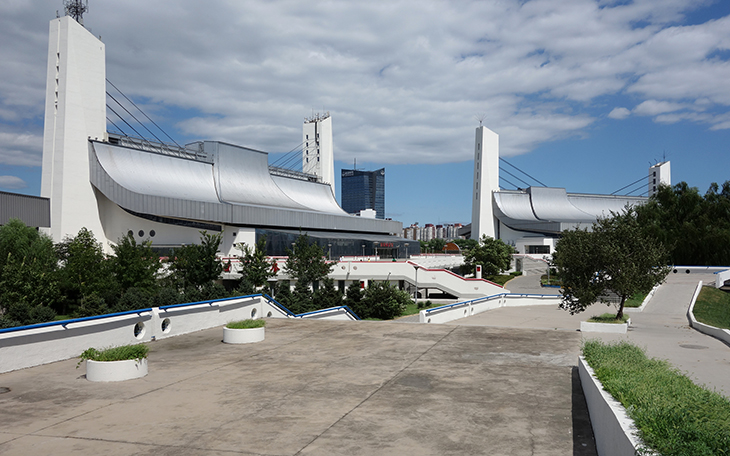
Beijing’s “Olympic Sports Center Gymnasium”
At least in the field of architecture, the relationship between the two countries at that time was clearly depicted as “China learning/Japan teaching.” Beijing’s “Olympic Sports Center Gymnasium” (1990, pictured), built for the Asian Games, can be thought to embody that composition. Selected as one of the “Ten Great Buildings of Beijing” (1990s), it is a national building characterized by a design that hangs from the roof like a suspension bridge. As is immediately evident, it was modeled after Tange Kenzo’s Yoyogi National Stadium’s First Gymnasium. In fact, the designer did the design work after training at Tange Associates. Nonetheless, the design is far removed from the elegance of Yoyogi Gymnasium. At the end of the 20th century, this was representative of the differences in design skills and technical capabilities.
At the end of the 1990s, the time finally came for more Chinese projects by so-called atelier architects, rather than major companies, as featured in “Beyond Borders.” The role expected of them was to be designers who enhance the design value of architecture rather than being technical pioneers. National projects like Beijing National Stadium, the Bird’s Nest and the new China Central Television (CCTV) building also came about in this era of foreign architects.
There are many Japanese architects active in China, but Isozaki Arata and Kuma Kengo stand out in particular.
Isozaki Arata’s “Shenzhen Cultural Center” (2008) was the first library and theater facility in China built through a full-fledged international design competition, with a rippling glass façade and a unique tree-like structure that glows golden. Isozaki has also created many large-scale cultural institutions in major cities in China, and since the 2000s, his work has been concentrated in China. Sichuan Province’s “Museum of Japanese War Crimes against China” [Sichuan Museum of Jianchuan] (2015) is a museum dedicated to exhibits related to the Anti-Japanese War, and having been designed by a Japanese architect, it is an extremely rare case that deserves special mention. As described in “Re-ruined Hiroshima, project, Hiroshima, Japan” (1968), which includes a collage of images of a futuristic city in the ruins of Hiroshima after the atomic bombing, Isozaki born in 1931 has produced works related to the war.
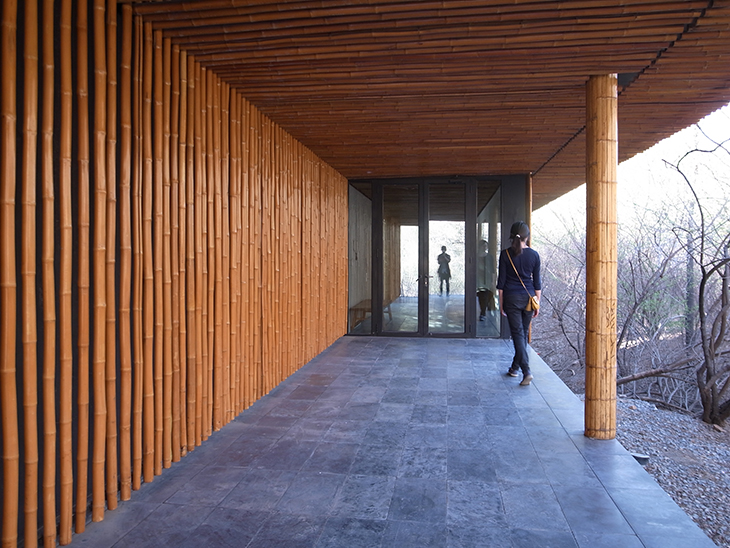
Kuma Kengo’s “Great Bamboo Wall,” 2002
Kuma Kengo is currently the leading architect of Japan, but he also has the most works in China by far. His “China debut” was the “Great Bamboo Wall” (pictured), completed in 2002. It is part of the villa district “Commune by the Great Wall” developed by private developer SOHO China (then SOHO China Beijing Hongshi Industrial) near the Great Wall, and is famous in Japan as well because of a TV commercial featuring Japanese actress Yoshinaga Sayuri. The light-hearted spatial expression using Chinese bamboo earned high praise. Since then, he has also worked on “Sanlitun SOHO” (2010) and “Hongkou SOHO” (2015) by the same client, as well as “Alibaba Group Taobao City” (2013), which is the headquarters building of Alibaba, the major Chinese IT company, so his work output has been uninterrupted.
China as seen from Japan: Attention in the architectural media
Conversely, how much of Chinese architects’ work can be seen in Japan?
Notable examples are “Home-for-all in Kesennuma” (2013, pictured) by young architect Zhao Yang from Yunnan that was a reconstruction (assembly hall) in the wake of the Great East Japan Earthquake and “Clover House” (2015) by MAD Architects, of which Japanese Hayano Yosuke is also a member, which is a residential building and kindergarten featuring a curved roof that looks like a melted kiritsuma-yane (gable roof). MAD also designed an installation that energizes the scenery of the Kiyotsu Gorge Tunnel in the “Echigo-Tsumari Art Field” in Niigata Prefecture. It is now one of the signature works of the Echigo-Tsumari Art Triennial on the same site. “MIHO Museum” (1997) by Suzhou-born and US-based architect Ieoh Ming Pei can also be seen as a pioneering example of a Japanese project by a Chinese architect. Even so, few works by Chinese architects have been built in Japan. In Japan, the work of foreign architects is quite limited due to the maturity of domestic architects and construction companies. What is usually required is the brand power of international star architects, so the priority of hiring Chinese architects, who have not yet become particularly active on the international stage, is somewhat lower.
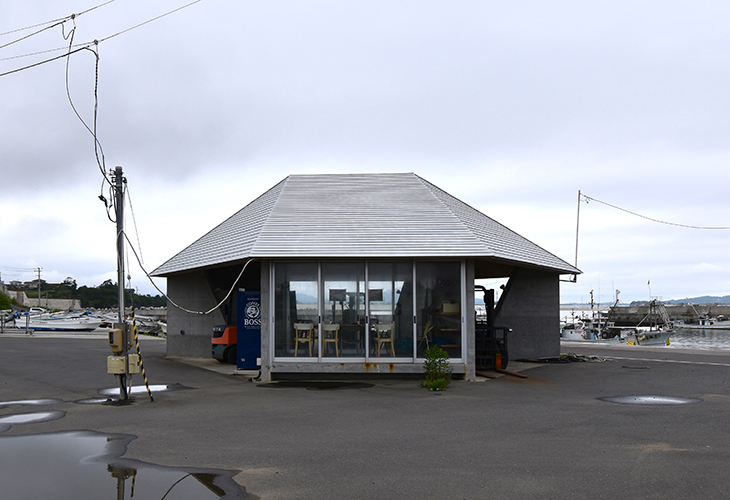
Zhao Yang’s “Home-for-all in Kesennuma,” 2013
However, this does not necessarily mean that interest in China is low in the architectural community as a whole. If we expand the discussion to Asia and look back at history, interest increased in the 1980s. The Architectural Institute of Japan celebrated its 100th anniversary in 1986, and as a commemorative project, the “International Symposium on Architectural Interchanges in Asia” (ISAIA) invited many people from Asia to commemorate its founding, symbolizing the era of the “Asian Boom.” After that, special issues about Hong Kong, Taiwan, Indonesia, and so forth were continuously published in private architectural magazines. More broadly, economic and cultural exchanges between East Asia, as it was achieving economic growth, and Southeast Asia were attracting attention in Japanese society.
In the 2000s, interest in modern China peaked as Japanese architects continued to expand. In summary, the focus of discussions about China in the architectural media at the time centered on two points. First, how will cities be transformed in China’s rapidly growing economy? Second, what kinds of projects are Japanese architects getting involved in under these circumstances?
This curiosity about “booming China” and expectations of practical benefits that Japan can gain from it are not limited to the architectural world. In fact, in contrast to Japan after the bubble burst, there was an architectural bubble in China. In 2007, TOTO GALLERY・MA in Nogizaka, Tokyo, a gallery specializing in architecture, selected two young architects who had just started working in Beijing (Sako Keiichiro and Matsubara Hironori) to organize an exhibition. This provided a stimulating picture of how projects of great numbers and scale not available to young people in recession Japan were all over the place in China.
In the 2010s, the proper names of architects finally became known. The most famous is probably Wang Shu, the first Chinese architect to win the Pritzker Architecture Prize in 2012. Recently, a translation of his architectural views and design methods (Build a House, 2016) was published, the first intellectual work by a Chinese architect that can be read in Japanese. Aforementioned MAD Architects has produced a special issue in the Japanese-English bilingual magazine a+u. Ai Weiwei is a contemporary artist with an activist face, but in fact he is also active as an architect (although he has produced few works in recent years). As with his artworks, he has a minimalist style with a focus on detail, and he was involved in the design of the “Bird’s Nest” for the Beijing Olympics at the idea stage. His architectural works were featured in a major solo exhibition at the Mori Art Museum titled “Ai Weiwei: According to What?” (2009).
Toward exchanges on the edges
We have looked briefly at the history of the acceptance of Japanese architecture in China after the normalization of diplomatic relations as well as the acceptance of Chinese architecture in Japan. Finally, I would like to talk about some future prospects and challenges.
It is clear which of Japan and China has been more proactive in its acceptance of the other, and this is a trend that is likely to persist. Although I haven’t mentioned it so far, Japanese architects not only have many projects in China, but they are also very active in translating history books and collections of works into Chinese and holding architect exhibitions. At Power Station of Art (PSA) and elsewhere, solo exhibitions of architects like Ishigami Junya, Ito Toyo, Shinohara Kazuo and others are held almost every year, and the contents of these exhibitions is even more extensive than those held in Japan. In contrast to Japan, the activities of the architectural media, including Chinese exhibitions, are booming, and this gap will continue to widen.
The 50th Anniversary Commemorative Project for Normalization “Beyond Borders” is part of such a rich history of Chinese acceptance of contemporary Japanese architecture. The challenge going forward will be how to provide such opportunities for horizontal exchange between architects in the two countries. Rather than simply introducing Japanese star architects to China, we should engage in dialogue under some theme. This is because that has become possible now.
Chinese architects’ work has been proliferating rapidly since the late 2010s. In addition to designing huge development projects, works in very small stores’ interior and renovation and rural community design have become prominent (the background being the new urbanization implementation plan of the Xi Jinping administration). Likewise, this trend is also evident in Japan since the Great East Japan Earthquake. That is, architects of the two countries are contemporaneous. Unlike the contrasting relationship between “recession Japan” and “bubble China” until the 2000s, dialogue between the architects in the two countries has finally reached a stage of sharing ideas about specific issues and methodologies without the need to rely on the theme of “Japan-China exchange.”
Architects who engage in such diffuse work are not star architects in Japan or China, but are peripheral to the construction industry as a whole, such as young people and rural residents. The things on the periphery may be surprisingly close to each other. At the same time as attracting attention to architects as global elites who are active beyond national borders, I hope that these peripheries will come into contact with each other, leading to exchanges that shake up the borders = edges themselves.
Further historical examination of architectural exchanges between the two countries as outlined in this paper will also be necessary.
This article deals only with the period after the normalization of diplomatic relations, but it is not that there were no exchanges prior to that. For example, Marxist architect Nishiyama Uzo (1911–1994) visited China for less than a month in the early 1960s and interacted with members of the Architectural Society of China. From the perspective of the Japanese architectural community, it was an opportunity to directly import the architectural and urban planning ideas of socialist realism, and from the perspective of China, it was an opportunity to gain a technologically advanced country as a partner to replace the Soviet Union, with which relations had deteriorated. In the end, this valuable opportunity for exchange produced little fruit, but if the exchanges had continued successfully, it would have had no small impact on the modern architecture of both countries.
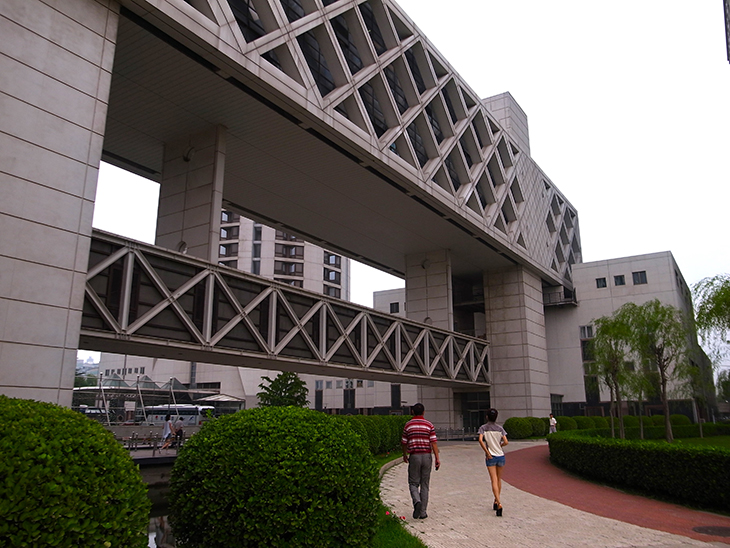
Kurokawa Kisho’s “Chinese-Japanese Youth Center,” 1990
I said that the Japanese architectural community’s interest in Asia, including China, gained momentum after the 1980s. In fact, research on former colonial architecture finally began to produce results from that time. In the architectural media before the 1970s, Asia was rarely talked about due to remorse for the war of aggression. However, this is not to say that there were no projects at all. By the mid-1950s, major general contractors had already made inroads into Southeast Asia in the wake of postwar reparations projects. Even in China after the normalization of diplomatic relations, huge ODA projects were carried out as an alternative to reparations, including the “Chinese-Japanese Youth Center” (1990, pictured) designed by Kurokawa Kisho and many other architectural and infrastructure development projects. Interestingly, recent research has also pointed out that the people involved in these projects and their development techniques have continuity with pre-war colonial construction.
As I mentioned at the start, architecture is not suitable for direct political claims because it is an “impure” art that is deeply intertwined with society and the economy; but on the other hand, for the same reason, it can be robustly productive within diplomatic strategy as well as contain unexpected historical continuity. The history of architectural exchanges between Japan and China should be depicted not only in terms of architects’ spectacular works, but also by including such policy projects.
Translated from “Kokko seijoka kara Sono 50 shunen made: Nihon to Chugoku, Kenchiku Koryu no Rekishi (From the Normalization of Diplomatic Relations to Its 50th Anniversary: A History of Architectural Exchanges between Japan and China),” Sekai, February 2023, pp. 127–134. (Courtesy of Iwanami Shoten, Publishers) [February 2023]
Keywords
- Ichikawa Koji
- Tohoku University
- Japan
- China
- diplomatic relations
- architecture
- Beyond Borders: Architectures of Japan
- Japan Foundation
- Design Society in Shenzhen
- design partnership
- horizontal exchange
- exchanges on the edges
- “recession Japan”
- “bubble China”
- architectural media

